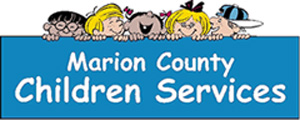2017 Marion County Workshops
***January 7th (Saturday, 9am-12PM) OR January 12th (Thursday, 6pm-9pm) ***
Mandatory training: Foster Care Policies, Rules and Procedures.
Register with TONI. This is NOT an E-TRACK TRAINING
IF YOU CAN’T MAKE EITHER TRAINING, PLEASE LET TONI KNOW.
(ITP-Part of the Child Protective Team)
January 31st (Tuesday, 9am-4pm)
Child Abuse & Neglect Identification and Reporting Training Register: Bryant Brown
740-386-0414 or bryant.brown@jfs.ohio.gov
(ITP: The Dynamics of Abuse and Neglect and Impact of Abuse and Neglect)
January 28th (Saturday, 9am-4pm) E-Track: 990-26-NOS
Red Cross First Aid and Adult & Pediatric CPR with AED Trainer: Heather Killen
(ITP: Other Required Trainings)
February 11th (Saturday, 9am-4pm) E- Track: 941-FF14-S
Fostering Self-Reliance in Children & Youth: Roots & Wings Trainer: Jamole Callahan
(ITP: IL and Impact of Abuse and Neglect on Development)
March 1st (Wednesday, 6pm-9 pm) E-Track: 949-20
Impacting Visitation for Success Trainer: Anthony President
(ITP: Culture and Working with Children’s Families)
April 7th (Friday, 9am-4pm)
Child Abuse & Neglect Identification and Reporting Training Register: Bryant Brown
740-386-0414 or bryant.brown@jfs.ohio.gov
(ITP: The Dynamics of Abuse and Neglect and Impact of Abuse and Neglect)
April 8th (Saturday, 9am-12pm) E-Track: 922-25
Strengthening the Child Welfare Team: Who, What, Where, When and How for the
Best Interest of the Child
(ITP: Part of the Child Protective Team)
April 8th (Saturday, 1pm-4pm) E-Track: 943-1
Dealing with the Impact of Early Sexual Trauma Trainer: David Zidar
(ITP: Caring for the Sexually Abused Child)
May 6th (Saturday, 9am-4pm) E-Track: 925-139
Trauma-Informed Discipline: What Caregivers Need to Know Trainer: Anthony President (ITP: Behavior Management Techniques)
June 20th (Tuesday, 6pm-9pm) E-Track: 988-16
It’s Not the Brady Bunch: Family Effects of Addiction Trainer: Brian Bethel
(ITP: Substance Abuse and Dependency)
August 19th (Saturday, 9am-4pm) E-Track: 928-8
Fasten Your Seatbelt: The Roller Coaster Ride is Beginning! Helping Children Deal with the Emotions Before and After Parental Visits Trainer: Linda Davis
(ITP: Working with Children’s Families)
August 24th (Thursday, 9am-4pm)
Child Abuse & Neglect Identification and Reporting Training Register: Bryant Brown
740-386-0414 or bryant.brown@jfs.ohio.gov
(ITP: The Dynamics of Abuse and Neglect and Impact of Abuse and Neglect)
September 9th (Saturday, 9am-4pm) E-Track: 989-9
Zebras Don’t Get Ulcers: Ways to Manage Stress Trainer: Linda Davis
(ITP: Effects of Caregiving on Families)
October: TBD
October 14th (Saturday, 9am-4pm)
Child Abuse & Neglect Identification and Reporting Training Register: Bryant Brown
740-386-0414 or bryant.brown@jfs.ohio.gov
(ITP: The Dynamics of Abuse and Neglect and Impact of Abuse and Neglect)
November 28th (Tuesday, 6pm-9pm) E-Track: 995-56
Diagnosis Unknown: A Layman’s Guide to Mental and Emotional Disorders
(ITP: Symptoms of Mental Illness/Learning Disorders) Trainer: Brian Bethel
